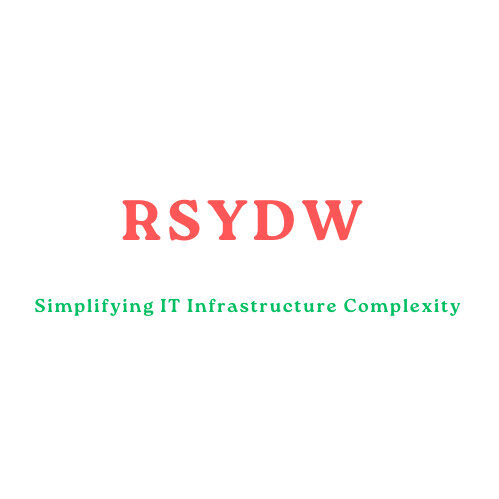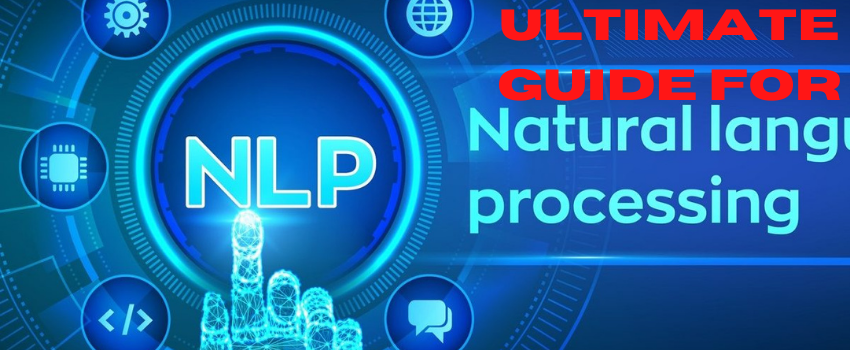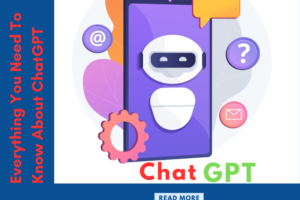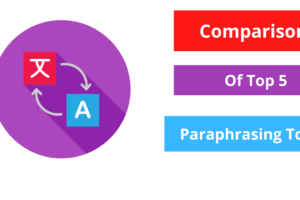|
Getting your Trinity Audio player ready... |
Table of Contents
Ultimate Guide For Natural Language Processing 2021
Natural Language Processing is popularly known with its short form named as NLP.We are going to share utlimate guide for natural language processing in this post.So lets start with knowing little bit about what is nlp?.
What Is Natural Language Processing?
Natural Language Processing (NLP) refers to a computer program’s capacity to interpret human language as it is spoken and written – also known as natural language. It’s a part of artificial intelligence (AI).
Perception and communication are critical elements of intelligent activity. They enable us to engage with our surroundings more efficiently. Humans perceive and communicate through their five primary senses of sight, hearing, touch, smell, and taste, as well as their capacity to produce meaningful statements.
Sight and hearing are two of the more complicated senses that need cognitive inference. Creating algorithms that understand spoken language and visual situations are two of the most difficult problems that Al researchers face.

How To Create Natural Language Processing Programs
It is a challenging challenge to create programs that understand natural language. There are too many natural languages . They have an infinite number of distinct sentences.
Regardless of how many phrases a person has heard or seen, new ones may always be generated. A natural language also contains a great deal of ambiguity. Many words, such as can, bear, fly, and orange, have many meanings, and sentences can have multiple meanings in various situations.
Creating systems that “understand” real language is one of the most difficult jobs in Al. It necessitates that a computer convert statements in a conversation into data structures that transmit the intended meaning of the words to a reasoning software.
On general, this means that the reasoning software must be well-versed in the structure of the language, passible semantics, the user’s views and aims, and a wide range of general world knowledge.
Natural Language Processing in Artificial Intelligence
Developing programs to comprehend natural language is crucial in AI because user acceptance requires a natural manner of communication with technology. Furthermore, one of the most important indicators of intelligent conduct is the capacity to effectively communicate.
All programs must be able to communicate with their human counterparts in a natural manner, and one of the most essential media for this purpose is natural language.Before proceeding, a definition of comprehension as it is used here should be provided.
We can say a software understands a natural language when it responds to input by executing a (predictably) accurate or appropriate action.
For example, we say a kid displays comprehension when it replies to a question with the proper response.
The action performed does not have to be an external reaction. It might just be the formation of some internal data structures, as would happen while learning new facts.
In any event, the structures generated should be meaningful and interact appropriately with the program’s world model representation. Many significant topics of natural language interpretation and language creation are addressed.
Vision Processing
Accurate machine vision offers us a whole new world of computer applications. Mobile robot navigation, complicated industrial operations, satellite image analysis, and medical image processing are examples of these applications.
In this section, we’ll look at how to turn raw camera pictures into meaningful information about the world.
A video camera sends a picture to a computer in the form of a two-dimensional grid of intensity levels. Each grid piece, or pixel, can contain a single bit of information (black/white) or multiple bits of information (perhaps a real-valued intensity measure and color information). Thousands of pixels make up a visual picture. What types of activities do we want to accomplish with images?
Below are four operations you can do.
- Signal Processing: Improving a picture for human use or as input to another software.
- Measurement Analysis: For pictures containing a Single Object, identifying the object’s two-dimensional extent.
- Pattern Recognition: For single-object pictures, categorizing the item into one of a limited number of categories.
- Image Understanding: For photos with a large number of items, identifying the objects in the image, categorizing them, and creating a three-dimensional model of the scene.
Image comprehension is the most challenging visual job, and it has been studied and analyzed in AI. While certain elements of picture interpretation, like as pattern recognition, have been addressed, the whole problem remains unresolved due to obstacles such as the following.
- The reality is three-dimensional, whereas a picture is two-dimensional. When a picture is generated, some information is unavoidably lost.
- Several things may be seen in a single picture, and some may partially obscure others.
- The value of a single pixel is influenced by a variety of factors, including the color of the object, the source of the light, the angle and distance of the camera, air pollution, and so on.
It is difficult to separate these impacts. A high degree of expertise is also required for evaluating visual data. While no low-level visual characteristics can inform us what the item is, its surrounds can give us top-down expectations.
When it comes to understanding visual situations, expectations are crucial. However, the chosen meanings of egg, bacon, and plate mutually reinforce one another, giving the required expectation.

Speech Processing
Natural language understanding systems often accept written input, however this is not suitable for a variety of applications. In -computer interfaces, spoken language is a more natural way of communication.
Speech recognition technologies have been around for a while and are widely used. The five key design problems in speech systems are listed below.
These concerns also give dimensions against which systems might be compared.
Speaker Dependence Vs Speaker Independence
A speaker-independent system is capable of listening to any speaker and converting the sounds into written text. Because of the vast differences in pitch and accent, achieving speaker independence is difficult. It is simpler to create a speaker-dependent system that can be trained on a single speaker’s voice patterns. This system will only function for that one speaker. It can be kept on another voice, but it will no longer operate for the original speaker.
Continuous Vs Isolated-Word Speech
It is simpler to comprehend isolated-word speech, in which the speaker stops between each word, than continuous speech. Because of boundary effects, words are pronounced differently in different situations.
For example, the spoken-word “could you” has a j sound, and despite the fact that it contains two syllables, the speech wave contains no empty space between them. However, because people have trouble communicating in separate words, the capacity to identify continuous speech is critical.
Online vs. Offline Processing
Highly interactive applications demand that a sentence be translated into text as it is uttered, whilst other scenarios allow for minutes of processing. Real-time rates are difficult to attain, particularly when higher-level knowledge is required.
Vocabulary Size (Large vs. Small)
Recognizing utterances with limited vocabularies, such as 20 words, is easier than dealing with huge vocabularies, such as 20,000 words. A limited vocabulary aids in limiting the amount of possible word possibilities for a particular speech segment.
Broad Grammar vs. Narrow Grammar
A phone number is an example of a restricted grammar: S—> XXX-XXXX, where X can be any number between zero and nine.
Nonetheless, no speech system is perfect. Recently, there has been increased interest in combining voice recognition with natural language processing.
What is Perplexity in NLP?
Perplexity is a quantitative measure of grammar used in the voice recognition literature. The number of words that can lawfully occur next in the input is measured by perplexity (on average).
The telephone number identification problem has a perplexity of ten since there are ten choices at each decision point.
Word-pair grammar may minimize confusion from thousands to 60 for a basic 1000-word English assignment. According to Lee and Hon (1988), Bigram grammar may decrease ambiguity to 20.
While natural language grammars correctly forecast word categories (such as noun and verb), they do not anticipate which words within a category are likely to appear in the input.
For example, the word “the” grammar may suggest that the next word is either an adjective or a noun. However, this is insufficient because there are hundreds of adjectives and nouns to select from. As a result, it is logical to turn to statistical or collocational linguistic data.
For example, if the word “doctor” is identified, a person can anticipate to hear the term “nurse” rather than “horse” later in the input. Unlike more sophisticated syntactic and semantic structures, collocational data can be retrieved automatically from vast amounts of material on the internet.
Ultimately, we intend to replace statistical data with semantic and conversation knowledge. If we know the talk is about physicians and we know doctors and nurses generally collaborate, we should be able to set appropriate expectations. A broad knowledge base and a greater comprehension of semantics and discourse are required for such an approach.
What is NLP used For?
NLP (Natural Language Processing) used for enabling computers to converse with people in their native language while also automating other language-related activities.
For example, NLP enables computers to read text, hear voice, analyze it, assess sentiment, and identify which portions are significant.
Natural Language Processing Examples
Below are few most recognized NLP examples you might have already experienced.You may recall it while reading.
- Data Analysis
Text Analytics
Digital Phone Calls
Language Translation
Search Results
Email Filters
Smart Assistants
Predictive Text
Let us understand them briefly one by one sequentially.Let us start with data analysis.
Data Analysis
As more BI vendors offer a natural language interface to data visualizations, natural language capabilities are being integrated into data analysis workflows.
Smarter visual encodings, for example, provide the optimal visualization for the correct job depending on the semantics of the data.
This gives users more possibilities to examine their data by utilizing natural language statements or question fragments composed of numerous keywords that may be evaluated and ascribed a meaning.
Using language to explore data not only improves accessibility, but it also reduces the barrier to analytics across companies, beyond the usual group of data analysts and software developers.You can find most popular data analysis tools here.You can specially find data analyss book here.
Text Analytics
Text analytics uses linguistic, statistical, and machine learning approaches to transform unstructured text data into useful data for study.While sentiment analysis may appear overwhelming to companies, especially those with a big consumer base.
An NLP tool will generally examine customer interactions, such as social media comments or reviews, or even brand name mentions, to see what is being said.
Analysis of these interactions may assist companies in determining the success of a marketing campaign or in monitoring trending customer concerns before deciding how to respond or improve service for a better customer experience.
Keyword extraction and identifying structure or trends in unstructured text data are two more ways that NLP may aid with text analytics.
In the digital age, there are several applications of NLP, and this list will increase as organizations and industries embrace and recognize its usefulness.
While a human touch is necessary for more complicated communications difficulties, NLP will enhance our lives by managing and automating simpler activities first, then moving on to more complex ones through technological advancement.
Digital Phone Calls
We’ve all heard the phrase “this call may be recorded for training reasons,” but we rarely consider what that implies.
These recordings, it turns out, may be utilized for training reasons if a client is dissatisfied, but most of the time, they are stored in a database for an NLP system to learn from and better in the future.
Automated systems route client calls to a service agent or online Chatbots, who provide useful information in response to consumer queries.
This is an NLP technique that many businesses, especially big telecoms firms, have adopted. NLP also permits computer-generated language that sounds similar to human speech.Like IVRS (Interactive Voice Response Systems) earlier developed by CMC Limited For LIC.Similar softwares developed by many companies and used in Call Centers.
Language Translation
Grammatically, it’s a mess, which is one of the tell-tale symptoms of cheating on your Spanish assignment.Many languages do not allow for direct translation and have distinct sentence structure ordering, which translation systems used to ignore.
They have, nevertheless, come a long way. Online translators can use NLP to translate languages more correctly and provide grammatically correct output.This is really useful when attempting to converse with someone who speaks a different language.
Not only that, but when translating from another language to your native tongue, tools automatically identify and translate the language depending on the text you enter.Best known example you may recollect is Google Translate.
Search Results
NLP is used by search engines to surface relevant results based on comparable search patterns or user intent, allowing the ordinary person to discover what they need without having to be a search-term wizard.
Google, for example, not only anticipates which popular searches may apply to your inquiry as you begin typing, but it also looks at the big picture and identifies what you’re trying to express rather than the specific search phrases.
Someone might enter a flight number into Google to obtain the flight status, write a ticker symbol to get stock information, or enter a math problem to access a calculator.
These are some of the variants you may encounter while conducting a search, since NLP in search connects an ambiguous query with a related item and gives helpful results.
Email Filters
Email filters are one of the most fundamental and early uses of NLP on the internet. It began with spam filters, which identified specific words or phrases that indicate a spam message.
However, filtering has advanced, as have early NLP applications. Gmail’s email categorization is one of the more common, newer implementations of NLP.
Based on the content of the email, the algorithm determines if it belongs in one of three categories (main, social, or promotional). This maintains your inbox manageable for all Gmail users, with essential, relevant emails you want to analyze and reply to promptly.
Smart Assistants
Voice recognition allows smart assistants such as Apple’s Siri, Amazon’s Alexa, Google Assistant to identify patterns in speech, infer meaning, and give a meaningful answer.
We’ve grown accustomed to saying “Hey Siri,” asking a question, and having her comprehend what we said and reply with pertinent responses based on context.
And we’re growing used to seeing Siri,Alexa,Assistant show up throughout our homes and everyday lives as we converse with them via thermostats, light switches, cars, and other devices.Voice based searches are in trending and on rapid growth pattern now a days.
We now expect personal assistants like Alexa,Siri and Assistant to comprehend contextual cues as they enhance our lives and make certain tasks simpler, such as purchasing things, and we even like it when they reply hilariously or answer questions about themselves. As these helpers learn more about us, our interactions will become more intimate.
Predictive Text
Autocorrect, autocomplete, and predictive text are so prevalent on smartphones that we take them for granted.
Autocomplete and predictive text are similar to search engines in that they forecast what you will say based on what you write, either completing the word or recommending a relevant one.
And autocorrect will occasionally modify words to make the overall message more comprehensible.
They, too, are learning from you. The more you use predictive text, the more it will adapt to your unique linguistic peculiarities.This allows for amusing experiments in which people exchange full phrases composed solely of predictive text on their phones.
That`s it about utlimate guide for natural language processing as of now.Stay tuned for various topics.You can find us on most of the social media or you can get to us by just searching “nixdrafts” in google.Request you to show favour to us and motivate us to keep sharing.
Conclusion
NLP is already part of our routine life and it is keep evolving and changing our life over last two decades.You may not be knowing but you must be using it.It is something like people are not aware they are paying taxes but everyone pays tax in form of indirect taxes.
It is era of Artificial Intelligence.Machine Learning and Deep Learning is on fast track advancement.NLP Technique is on its way to change our lives and provide maximum help to users and business.






Comments
Pingback: NLP: Ultimate Guide For Natural Language Processing 2021 | Latest Breaking News | Trending News
Pingback: TOP 10 BEST OPEN SOURCE NATURAL LANGUAGE PROCESSING (NLP) TOOLS NixDrafts
Pingback: 5 Most Used NLP Programmed Tools And Their Benefits NixDrafts
Pingback: What Is Artificial Intelligence? How Does Artificial Intelligence Work? NIXDRAFTS By RSY Digital World